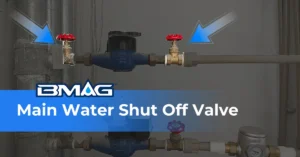What is One-Piece Ball Valve?
Цельный шаровой кран представляет собой простой, компактный клапан, изготовленный из цельного куска металла или пластика. Внутри, there’s a ball with a hole through it that turns to control fluid flow. These valves are popular in residential applications, such as household plumbing systems and they’re cost-effective.
Technical Specifications
Size Range and Pressure Ratings:
One-Piece Ball Valve Datatable
| SIZE | φd | PSI |
| 1/4" | 0.2 | 1000 |
| 3/8" | 0.28 | 1000 |
| 1/2" | 0.35 | 1000 |
| 3/4" | 0.49 | 1000 |
| 1" | 0.59 | 1000 |
| 1-1/4" | 0.79 | 1000 |
| 1-1/2" | 0.98 | 1000 |
| 2" | 1.26 | 1000 |
Temperature Ratings:
- PVC: 32°F to 140°F
- Латунь: -4°F to 366°F
- Stainless Steel: -20°F to 450°F
- Carbon Steel: 0°F to 400°F
Materials and Their Applications:
- Латунь
- Best for: Вода, air, mild chemicals
- Cost: $$
- Durability: Good
- Corrosion resistance: Moderate
- Stainless Steel
- Best for: Food, pharmaceuticals, corrosive fluids
- Cost: $$$
- Durability: Excellent
- Corrosion resistance: Excellent
- PVC
- Best for: Вода, chemicals, low-pressure systems
- Cost: $
- Durability: Fair
- Corrosion resistance: Excellent
Приложения & Industries
Water Systems:
- Residential plumbing
- Municipal water treatment
- Water filtration
Industrial Uses:
- Compressed air lines
- Basic chemical processing
- Cooling systems
- Basic process control
Comparison with Two-Piece Ball Valves
One-Piece vs. Two-Piece Ball Valves:
Structure Differences
One-piece ball valves have a single solid body that contains all components. The body is cast or forged as one unit, with the ball, stem, and seats assembled through the end. Two-piece ball valves, on the other hand, split into two parts.
Cost Comparison
One-piece valves are generally 30-40% cheaper than two-piece versions. This price difference comes from simpler manufacturing processes and fewer parts. Однако, when considering long-term costs, two-piece valves might save money since they can be repaired rather than replaced.
Installation and Handling
One-piece valves are lighter and more compact, making them easier to install in tight spaces. Since there are fewer joints, they’re also less likely to leak. Two-piece valves are slightly bulkier.
Selection Guide
How to Choose the Right 1-Piece Ball Valve:
- Determine Your Requirements:
- Pipe size
- Operating pressure
- Temperature range
- Fluid type
- Flow requirements
- Space constraints
- Consider These Factors:
- Material compatibility
- Pressure rating
- Temperature limits
- Cost constraints
- Installation method
- Local regulations
Installation & Maintenance
Installation Steps:
- Clean pipe ends
- Apply thread sealant (if threaded)
- Align valve with flow direction arrow
- Tighten connections properly
- Test for leaks
Best Practices:
- Don’t over-tighten
- Use appropriate tools
- Follow torque specifications
- Maintain clearance for the handle
- Support pipe properly
Factors Affecting Cost:
- Material quality
- Brand reputation
- Certification requirements
- Order quantity
- Market conditions
Market Trends
Current Developments:
- Smart valve integration
- Eco-friendly materials
- Enhanced durability
- Better sealing technology
- Automated monitoring
Future Outlook:
- Growing demand in residential sector
- Increased focus on water conservation
- Rise in smart home applications
- Stricter quality standards
- New material technologies
Часто задаваемые вопросы
Q: How long do one-piece ball valves last?
A: Обычно 5-10 years with normal use.
Q: Can they be repaired?
A: No, they’re designed to be replaced when worn.
Q: What’s the main advantage over other valve types?
A: Simplicity, reliability, and cost-effectiveness.
Q: How often should they be operated?
A: At least once every 3-6 months to prevent sticking.
Q: Can they be used for steam?
A: Not recommended – use multi-piece valves instead.










